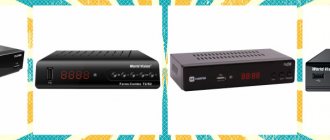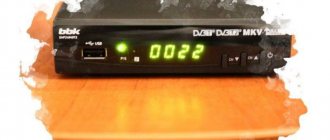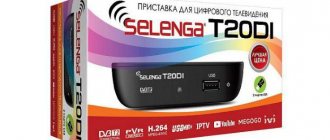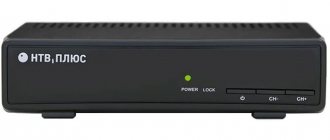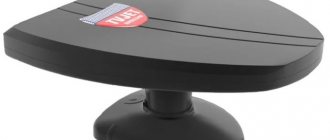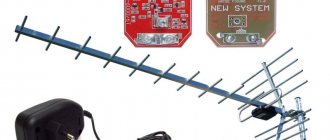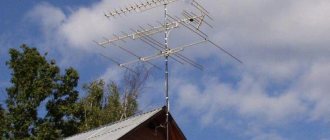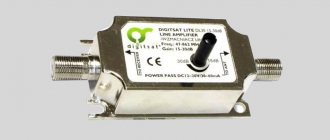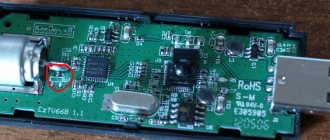A TV is a technology that has been considered indispensable for every family for a long time. Despite the fact that Internet television is now developing, access to free digital broadcasting is still important for the average user. An antenna and a TV that supports the DVB-T2 standard are what is needed for this in 2021. If you have an older TV model, you need a set-top box to receive digital channels. Selecting a receiver is quite simple - just study the functionality and take into account the cost of the product.
But how to choose an antenna for digital television? After all, it is the digital antenna that affects the quality and speed of transmitted reception. Moreover, many people are interested in the question: is an antenna needed for digital television? Next, we will consider the requirements for the antenna, focusing on existing classifications and their features. Moreover, we will go through the rules and recommendations regarding installation.
Television reception
There is much more confusion with towers. It is difficult to understand where the repeater of your favorite channel is located; broadcasting is carried out from different directions, at different distances. Experts say: Moscow's Ostankino Tower has a reliable coverage area with a radius of at least 50 km. An indoor antenna is quite enough for any needs of a lover of evening shows, exciting films, and ardent fans of Andrei Malakhov.
Skyscrapers and high-rise buildings block direct visibility to the tower, the signal is reflected, the electromagnetic wave is weakened, and a multipath effect occurs.
In light of these facts, a thoughtful choice of TV antenna is required.
Broadcast frequencies
Before going to the store, expand your horizons. For general information, information about broadcasting bands is useful:
- HF: 3 – 30 MHz;
- VHF:
- HF (VHF): 30 – 300 MHz;
- UHF (UHF): 300 MHz – 3 GHz.
Each state promotes its own standards; soap opera lovers need to understand foreign designations as well. (given in parentheses above).
Most commercial channels occupy the range 100 - 900 MHz, the list shows which range the TV channel belongs to.
There are three known broadcasting standards. It makes no sense for the average TV viewer to delve into each document in detail, but know that the frequency increases with the channel number. When purchasing, pay attention to the notes in the instructions about the capabilities of the device. Often the information is duplicated on the packaging box. The choice of television antenna is carried out according to the need for receiving frequencies. Today's provider avoids CB and DV, conforming to European standards.
Selection criteria in accordance with premises conditions
Many people select a TV antenna based on its external appearance and stylish design, without paying attention to the technical characteristics and features. An illiterate choice has a negative impact on the quality of the signal. The most important thing is to understand for what operating conditions the antenna is used.
The housing is located on the top floor of a multi-storey building, the distance to the TV tower is 4-5 km, the windows of the apartment “look” towards the broadcasting station.
For such conditions, the best option is an external all-wave (universal) antenna without an amplifier. If the kit includes an amplifier, the device must have a regulator to prevent overload during reception and the appearance of interference.
- The dwelling is located on the upper floors of a high-rise building, but the windows are directed in the other direction from the television tower.
The optimal option would be a universal external modification, which is mounted on the roof of the house and directed towards the station. If this installation option is unacceptable, you can try indoor directional models.
- The apartment is located on the outskirts, on the ground floor with a distance to the television station of 20-30 km.
It is better to buy an active, universal type external antenna. The device is mounted on the roof of the building. Since the housing is located on the 1-2 floor, you should additionally buy a coaxial cable (it is included in the kit, but often the cable length of 7-8 m as standard is not enough).
Expert opinion
Torsunov Pavel Maksimovich
If you need to purchase additional coaxial wire, take a core with a resistance of 75 Ohms, SAT-50 or RG6 with wire weave and aluminum foil.
For such conditions, you can try to use internal directional modification, but if the user’s requirements for reception quality are small.
- The antenna is required for a suburban residential building or cottage with a significant distance (from 40-45 km) from the television tower.
To ensure full and high-quality reception, it is necessary to use a universal complex consisting of several TV antennas with different ranges, levels of TV signal filtering and amplification devices. But, if the user accepts the possible low-quality display of the picture on some channels, then it is permissible to use a universal (all-wave) external version with a good amplifier.
Which antenna for digital television would you choose?
ExternalInternal
Obvious ways to solve the problem. Antenna classification
The presence of a single tower located several kilometers away at a line-of-sight distance will allow reliable reception with an indoor antenna. We invite you to read a short excursion into the world of receiving electromagnetic waves, presented below.
There are the following types of television reception devices (excluding satellite dishes):
- by location:
- indoor;
- outdoor (street);
- hybrid.
- depending on the possibility of signal amplification:
- active;
- passive.
- by range:
- broadband;
- narrowband.
The division by location is global, the remaining characteristics are secondary and are present in various combinations. This covers all the diversity.
Do you need an amplifier?
A common problem is the picture disappearing on the TV. Let's consider whether it is possible to cope with such a nuisance and watch TV in high quality. In order to avoid this defect, an antenna amplifier for digital television was invented. If you already have one, then you can solve this problem by replacing it with a more powerful model.
Amplifiers are installed on both passive and active antennas.
- Passive antennas have their own amplification system, the replacement of which is impossible and only the use of an additional amplifier is available. They can be powered by 5 or 12 volts. In addition, they are divided into broadband (amplify in the meter and decimeter ranges) and range (amplify the signal in one sector).
- For active antennas, SWA amplifiers are the most popular in use.
The main advantage over other models is that it can withstand lightning strikes well. But LSA amplifiers are the least common due to frequent breakdowns, the main reasons for which are housing leaks and failure of the power supply. Amplifiers are installed at a short distance from the antenna to avoid the appearance of extraneous noise in the cable. If the antenna is decimeter, then the amplifier can be installed directly next to the TV.
You don’t have to buy amplifiers in a store; you can make them yourself using instructions from the Internet, where there is a lot of detailed advice. But here you need to be careful, because if you use low-quality parts, you cannot avoid the appearance of extraneous noise, which will make it difficult to watch TV.
Indoor antennas
Active and passive
Choosing an antenna with signal amplification will greatly increase the likelihood of reception. The cost of the indoor version ranges around $30 (HAMA H-44269), and there will be no complaints about the quality of the image transmitted by the mentioned tower. The difference between the active modification is manifested by the presence of a power adapter, bulky design, and additional service options.
For $6 (Remo Volga MV) buy a passive indoor antenna (without signal amplification). It differs from a simple piece of wire in two key ways:
- Possibility of flexible adjustment of telescopic antennae to the wavelength.
- Guaranteed impedance matching with the cable.
If the mentioned terms are jarring to the ears and are not familiar, you should not try to make an antenna yourself. You will need to maintain the geometric dimensions of the product and make adjustments using special instruments.
Radio lovers will be pleased with the fact that the correct choice of antenna will help them catch the FM band. $14 (Bandridge VTV200) is a passive model that confidently captures popular radio stations.
Broadband antennas
The term broadband means: all or at least most broadcast stations can be received. This type of antenna is chosen if it is not known in advance what frequency you want to catch. We would also recommend this type to thrifty owners in case new channels appear in the area.
How to distinguish a broadband product? Firstly, ask the seller, and secondly, the instructions or on the box say something like MV/UHF/VHF. This is how the broadcast ranges are listed. Thirdly, in addition to the telescopic whiskers, such an antenna has a semblance of a frame - that is, in fact, two types of antenna devices in one housing. This is explained by the impossibility of covering the entire broadcast width individually with telescopic or frame varieties.
For $50, buy an excellent active (with signal amplification) broadband antenna with additional options like a clock, alarm clock, or remote control.
Narrowband antennas
When the channel frequency is known, give preference to narrowband modifications. When choosing an indoor TV antenna, check for local broadcast information. Once you know the frequency, choose a product that supports the specified range. The list of channel correspondence is given above in the text.
It is easy to recognize a narrowband antenna by its relatively simple design - a simple frame or telescopic rods.
Features of choice
Indoor (internal) modifications are becoming simpler in terms of placement. But keep in mind that reception on internal versions becomes successful only if the signal level is stable and good (such places are called “confident reception zones”).
Use indoor models only in city apartments. When they operate in country houses and remote villages, the quality of the incoming signal decreases sharply.
When selecting an internal design, consider models that are optimally adapted to the conditions of Russian reception.
Modifications with:
- built-in amplification device (for 220 V power supply);
- the ability to smoothly adjust the gain;
- direction of reception.
The parameters of outdoor devices that are mounted outside the house are much better demonstrated. They should be purchased for furnishing summer cottages and your own country houses. But the installation of such structures requires more effort and the involvement of third-party specialists, which is reflected in the pricing policy.
Structural nuances
According to the nuances of technical design, digital TV antennas are divided into two options:
- Active . The model includes elements for signal reception/processing and an electronic amplifier device. The amplifier is often installed inside the housing. Power comes from a current source through an adapter. If you use this device incorrectly, then in places where there is good and stable signal reception, interference and various distortions may be observed on the TV screen.
- Passive . The device does not have microcircuits or transistors in its design; similar models do not have an adapter. Such TV antennas receive and process the signal due to their own geometry (design features). A passive device delivers a fairly high level of picture quality, but the built-in amplification is often not enough for high-quality pictures.
When operating amplification devices in an active TV antenna from unknown companies, the degree of signal processing will be of low quality, and the picture will be accompanied by the appearance of serious interference.
frequency range
Digital television antennas are also determined by the level of the range used:
- Duct . Such devices require the creation of certain conditions during operation; this is not necessary for standard TV operation.
- Range . Used when receiving UHF and MV waves. When using a digital antenna at home, it is better to opt for all-wave modifications (they can receive broadcasts on both MB and UHF).
Expert opinion
Torsunov Pavel Maksimovich
Considering that digital broadcasting in the Russian Federation is carried out in the UHF band, a UHF band device will be sufficient to process only “digits”.
Gain as an important selection parameter
Each antenna has a wide range of its own characteristics. From the numerous range of numbers and types to choose from, the possibility of amplification becomes important. This parameter is indicated in dB (decibels).
The higher these numbers are in the product data sheet, the stronger the gain of this antenna. But know that high gain settings do not always guarantee high-quality and stable images. The gain must correspond to the location where the antenna is planned to be installed.
Manufacturers often artificially inflate this indicator. Be aware that a home digital antenna cannot have a gain of more than 40 dB.
Outdoor antennas
An outdoor antenna is purchased when the receiving point is not visible from the window, and the indoor antenna does not pick up the signal. In this case, you need to attach the device to the roof and run the cable down to connect the TV.
The difference between external antennas is in the design - telescopic options are only suitable for a room where a person has the right to adjust the antennae. The product is installed on the roof once and for all, so the operating principle is different.
A durable casing hides the electronics, metal parts are protected from corrosion, the dimensions can be significant, and a special mount helps installers install the product as efficiently as possible.
Most often, varieties of “wave channel” are used on the street. This is a pin studded with a row of horizontal rods. This structure is directed towards the broadcasting station. Log periodic antennas look similar.
The cost of the product does not necessarily turn out to be high. The hybrid model for indoors and outdoors is priced at around $30 (GAL DA-600). The active broadband outdoor antenna Rolsen RDA-410, made of metal, will cost a little more.
With so many options, you might want to think twice. The hybrid version may be inferior in some ways in appearance, but if you need to remove the product from the roof, installation on the balcony should not cause any trouble. A typical indoor "wave channel" does not work unless there is a clear line of sight to the tower.
The outdoor version, therefore, differs from the indoor version in the housing and design of the receiving elements.
Rating of the best models
Based on sales statistics for the current and last year, the TOP digital antennas were compiled, which included the best internal and external modifications:
HARPER-ADVB-2128
An active room model with a built-in amplifier; for connecting an adapter, the kit includes an adapter that makes it easier to connect the device to the network; the model was developed in accordance with the regulations of European digital broadcasting standards. The device can work with both digital and analog signals and has high image quality.
LUMAX DA1502A
The device is a universal type, can be used inside and outside the home, the model is compatible even with outdated TV models, stably picks up a signal up to 35-40 km from the station, when an amplifier is connected, this range increases. Operates in low temperatures - from -40⁰С, affordable cost and small dimensions.
Thomson ANT1487
The device with an internal built-in antenna is suitable for 3D and HDTV reception, power is provided using a separate adapter, which is included in the kit, designed for a power of 230 V, and has high technical characteristics. When turned off, the device begins to function as a TV simulator; there is an adjustable amplifier of 45 dB.
Funke DSC-310
Outdoor active model, operating in the frequency range 174-230 MHz (for VHF) and 470-862 MHz (for UHF), the gain is stated at 20 dB, the network adapter is not included, it must be purchased separately. High-quality TV signal reception and processing in cities and suburbs, stylish design, simple and quick installation.
Hyundai H-TAI200
Internal active TV antenna with a maximum wave frequency of 470 MHz (for UHF), gain 30 dB, operates from a standard power source, easy to set up, average price level. There is a light indicator of operation, you can change the angle of inclination, and it is lightweight - 400 g.
Selenga-131F
A passive antenna for external placement, the signal reception angle is designed for 10⁰, has the possibility of all-wave reception with a maximum wave frequency for the UHF range of 470 MHz. The device is protected from moisture and dust; the body is made of highly durable aluminum.
BBK DA18
Active indoor antenna of desktop design, power is provided using a tuner (receiver) or adapter, gain 24 dB, permissible operating mode +5-+35⁰С. It is distinguished by its compact size, low weight of 0.13 kg and modern design.
Locus Meridian-07AF Turbo
Active antenna for universal use, the kit includes a balanced amplifier; it is recommended to use an LI series injector as a power source. It is characterized by its small dimensions (weight is only 900 g), good signal amplification of 29 dB.
Characteristics and recommendations
Gain
An important parameter is the antenna gain. Sometimes a parameter means different things. But in the instructions and advertising brochures, only active models use amplification. The signal is received, amplified and then sent to the TV.
As for passive modifications, they only enhance in the azimuthal direction due to design features.
Focus
Most products are characterized by an uneven radiation pattern, that is, reception is better from certain azimuths. This is done to ensure the best quality using minimal means.
This factor allows you to combat multipath. The station emits a wave that is repeatedly reflected from the walls of houses and other objects. A series of reflected rays arrive at the receiving point. Despite the high speed of propagation of electromagnetic waves in space, the phase is not the same. The television image doubles, triples...
The expressed direction of reception allows you to select a single beam - streams coming from other azimuths are ignored.
Internal resistance
Ignorance of the laws of physics plays a bad joke on uninformed buyers. The antenna is characterized by internal resistance, which must match the same parameter of the connecting cable; two types are known:
- 50 Ohm (radio).
- 75 Ohm (TV).
If additional wires are required in addition to those included in the kit, it is worth buying a variety with a characteristic impedance equal to the antenna. According to accepted conventions, television cable is 75 ohm. Inquire about the internal resistance of the products from the seller.
general information
In our country, the DVB-T2 format is adopted as the basis for digital TV broadcasting. This should be remembered and taken into account when choosing a new TV - not every improved model supports the new TV broadcasting format we have specified. But, in addition to the receiving device itself (TV), an antenna is also needed to process and receive digital data.
Digital TV antennas have different gradations. When figuring out how to choose an antenna for digital television, know that they are divided into:
- installation method;
- features of TV signal amplification;
- frequency range.

